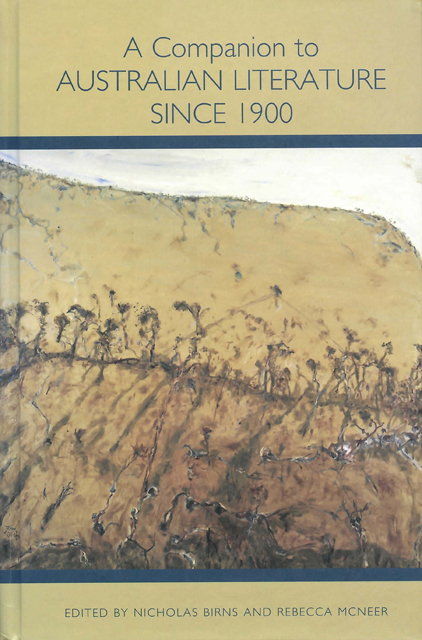Book contents
- Frontmatter
- Dedication
- Contents
- Chronology of Main Events in Australian History, 1901–2005
- Acknowledgments
- Note on the Cover Illustration and Artist
- Introduction
- Part 1 Identities
- Part 2 Writing Across Time
- Part 3 International Reputations
- Part 4 Writers and Regions
- Part 5 Beyond the Canon
- Notes on the Contributors
- Index
11 - Australian Poetry, 1970–2005
Published online by Cambridge University Press: 10 March 2023
- Frontmatter
- Dedication
- Contents
- Chronology of Main Events in Australian History, 1901–2005
- Acknowledgments
- Note on the Cover Illustration and Artist
- Introduction
- Part 1 Identities
- Part 2 Writing Across Time
- Part 3 International Reputations
- Part 4 Writers and Regions
- Part 5 Beyond the Canon
- Notes on the Contributors
- Index
Summary
In March 1973 A. D. Hope (1907–2000) wrote in his journal: “Worthy persons are always trying to encourage poetry, as though it were in danger of dying out, like a rare animal species, unless protected and fostered. In fact, it has become a sort of pest and cries out for control” (353). Hope’s facetious observation highlights the two contradictory views of contemporary Australian poetry. Whether it has been declining or proliferating (perhaps rashly) depends on one’s perspective. Evidence for the “decline” model can be seen in the deterioration of poetry as a form of public speech, low sales of poetry titles, and the fact that attempts to publish poetry through mainstream publishers ultimately failed. By the 1990s most mainstream publishing houses — Angus & Robertson, Penguin, Heinemann, and Picador — had withdrawn from poetry. At the same time, there is plenty of evidence of Australian poetry’s dynamism.
The 1970s inaugurated an “explosion” of poetry collections, little magazines, and anthologies. The withdrawal of major publishers meant that independent publishers (such as Salt, Five Islands, Brandl & Schlesinger, Black Pepper, and Giramondo) published major poets, often with very high production standards. In 2003 two important annual anthologies were launched by major publishers: The Best Australian Poetry by UQP, and The Best Australian Poems by Black Inc.
The period also saw Australian poetry’s internationalization: through internet communication (found in discussion lists, such as poetryetc, and electronic journals such as Cordite, Coral Hull’s Thylazine, and John Tranter’s Jacket), international publication (by publishers such as Salt and Shearsman), internationally oriented local journals and publishers (such as Heat, Boxkite, and Michael Brennan’s Vagabond Press), and the inclusion of non-resident poets (such as Peter Porter, John Kinsella, and Tracy Ryan) in the Australian poetry community. Further diversification can be seen in new modes of production, such as CD-ROM (as in the journal Paper Tiger), and in organizational support for poetry, such as the Poets Union (formed in 1977) and the Poetry Australia Foundation (formed in 2002).
- Type
- Chapter
- Information
- A Companion to Australian Literature since 1900 , pp. 191 - 206Publisher: Boydell & BrewerPrint publication year: 2010

